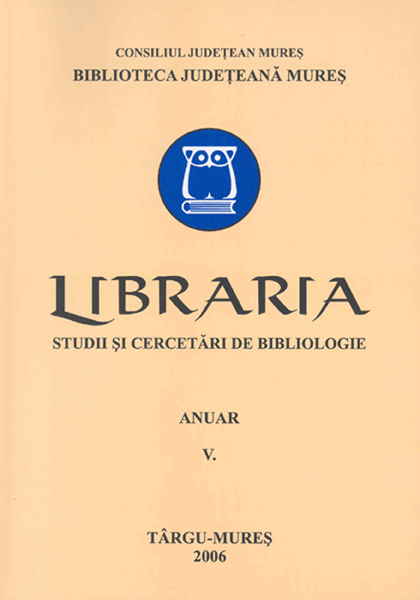Activitatea tipografiei de la Buda de la începuturi şi până la cenzoratul lui Petru Maior
The Activity of Romanian Typography of Buda From its Beginnings up to Petru Maior’ s Censorship
Author(s): Monica AvramSubject(s): Cultural history, Library and Information Science, Social history, 18th Century, 19th Century
Published by: Biblioteca Județeană Mureș
Keywords: Typography from Buda; Petru Maior; Censorship; activity;
Summary/Abstract: The typography from Buda was founded in 1777, during Maria Tereza’ s reign, by transfering the typographic materials from the University of Tîrnavia. Its instruments were improved during time in different ways: buying the already known letters used by Ştefan Novacovici at Vienna, în 1795; making its own materials, by engaging letter makers etc. The rules of functioning were established in 1779; according to them, the new typography’ s role was to assure the necessary writings for a better national learning. In order to guarantee the best quality of the writings that were about to be published, an educated and honest man was going to check every material send for publication. The study is going to deal with the activity of the typography from Buda, more precisely its Romanian section, and its cultural influence upon Romanian cultural and social development. Thus, its goal is to reveal the typographic activity of Buda between 1777 and 1808. The three decades were divided, according to the man that took care and made the revision of Romanian books; thus, we could identify three stages: from the beginnings to 1794; the age of Ioan Onişor (1794 - 1804); the age of Gheorghe Şincai and Samuil Micu (1804 - 1808). We have identified 43 books printed at Buda, according to Bibliografia Românească Veche, the first edition as well as the second, and to some other studies; the domains they represent are quite various: learning books 23 (53,50 %); religious books 12 (27,90 %); history books 2 (4,65 %); other subjects 6 (13,95 %). The results of typographic activity of Buda are relevant for Romanian cultural and social development. The books printed at Buda, that became one of the most important European cultural centers, made the connections between the Romanians all over the Danubian space and also contributed to the evolution and spreading of enlightenment ideals.
Journal: Libraria. Studii și cercetări de bibliologie
- Issue Year: V/2006
- Issue No: 5
- Page Range: 144-169
- Page Count: 26
- Language: Romanian

